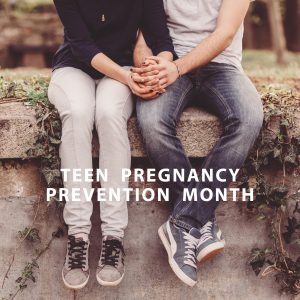By Pa Kou Thao, APNP
 Did you know May is Teen Pregnancy Awareness Month? It is a month dedicated to educating teens on preventing pregnancy.
Did you know May is Teen Pregnancy Awareness Month? It is a month dedicated to educating teens on preventing pregnancy.
A teen pregnancy is defined as any female between the ages of 15-19 who has had a live birth, abortion or miscarriage. In 2017, the United States had 194,377 babies born to teens, which was five percent of all births during that year1. Taking a closer look, this averages to about 19 births for every 1,000 female teens ages 15-191. Although these numbers may seem low, the rate of teen pregnancies in the United States is still higher than other developed countries, such as the United Kingdom, Germany, and Canada2.
Pregnancy prevention starts with educating our teen population. As we all know, abstinence or not having sex at all, is the best birth control method to prevent pregnancy. Unfortunately, this method may not always be effective when in the moment. Therefore, it is important to know what options are available for birth control.
The different birth control choices are:
| Birth Control Method | Definition | Pregnancy effectiveness based on 100 women |
| Abstinence | No sex at all | 100 % |
| Male condom | A thin film placed over a penis | 82% |
| Female condom | A thin loose film with two rings inserted in the vagina | 79% |
| Diaphragm and cervical cup | A silicone cup that is used with spermicide and inserted in vagina to cover the cervix. | 83-88% |
| Birth control pill | Oral contraceptive or “the pill” taken daily. Types: combination hormone and progestin-only | 95-91% |
| Birth control patch | A thin, beige colored combination hormone square patch applied weekly to skin | 91% |
| Birth control shot | A progestin injection given every 3 months | 94% |
| Vaginal ring | A small, flexible, plastic ring with combination hormone inserted into the vagina | 91% |
| IUD | A small T-shaped device placed in uterus. Types: hormonal (progestin levonorgestrel) or non-hormonal (copper). Good for 5-10 years depending on type. | 99% or more |
| Implant | A small, match-size, plastic rod with progestin placed in arm that lasts for three years | More than 99% |
| Sponge | A small, disk-shape, soft plastic foam device that contains spermicide, which is placed in vagina to cover the cervix | 76-88% |
| Withdrawal | Avoiding sperm from entering vagina by “pulling out” | 80% |
| Natural family planning | Fertility awareness methods are focused on signs of ovulation and patterns of menstrual cycle to plan sexual activity and avoid pregnancy. | 75% or less |
| Spermicide | A chemical that kills sperm | 72% |
| Emergency Contraception (EC) | A birth control method used after having unprotected sex within 3 to 5 days or sooner. Types: ECP (pill) or Copper IUD | ECP: 87-93% in preventing
Copper IUD: 99.9% in preventing pregnancy |
(above table)3
If you are a teen or a parent of a teen, contact us and we can discuss birth control options. We know it can be an uncomfortable conversation, but we are here for you! Call your Women’s Health Specialists provider at (920) 749-4000 to schedule your appointment today.
Sources:
1 Martin, J.A., Hamilton, B.E., Osterman, M.J., Driscoll, A.K., & Drake, P. (2018). Births: Final data for 2017. Hyattsville, MD: National Center for Health Statistics. Retrieved from https://www.cdc.gov/nchs/data/nvsr/nvsr67/nvsr67_08-508.pdf – PDF.
2 United Nations Statistics Division. (2015). Demographic Yearbook 2013. New York, NY: United Nations. Retrieved from https://unstats.un.org/unsd/demographic/products/dyb/dyb2013/Table10.pdf – PDF .
3 Office of Population Affairs. (2017, February 09). Emergency Contraception. Retrieved from https://www.hhs.gov/opa/pregnancy-prevention/birth-control-methods/emergency-contraception/index.html